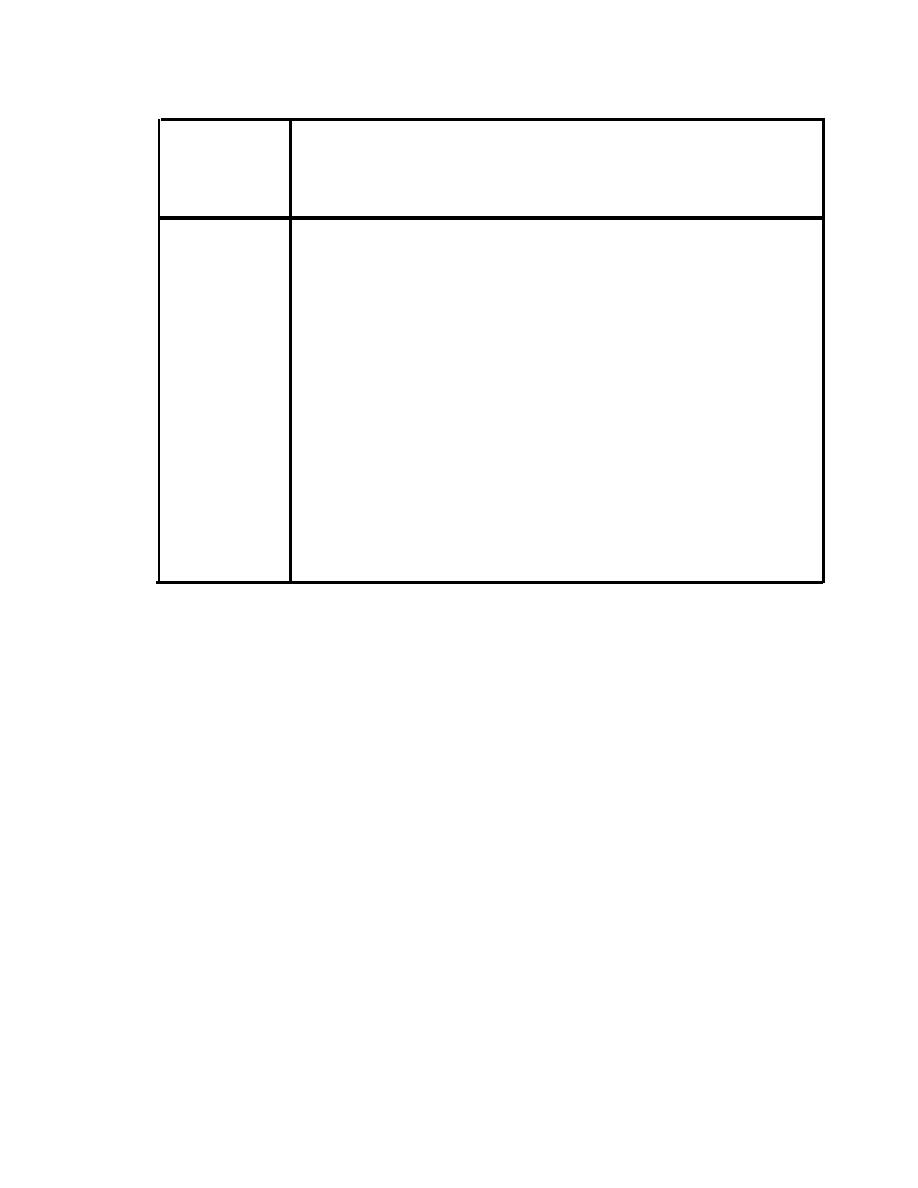
TM 5-805-4/AFJMAN 32-1090
Table 5-6. Insertion Loss of an Ideal Solid Outdoor Barrier
Insertion Loss, dB
Path-
Octave Band Center Frequency, Hz
Length
Difference,
ft.
31
63
125
250
500
1000
2000
4000
8000
.01
5
5
5
5
5
6
7
8
9
.02
5
5
5
5
5
6
8
9
10
.05
5
5
5
5
6
7
9
10
12
.1
5
5
5
6
7
9
11
13
16
.2
5
5
6
8
9
11
13
16
19
.5
6
7
9
10
12
15
18
20
22
1
7
8
10
12
14
17
20
22
23
2
8
10
12
14
17
20
22
23
24
5
10
12
14
17
20
22
23
24
24
10
12
15
17
20
22
23
24
24
24
24
24
24
20
15
18
20
22
23
24
50
18
20
23
24
24
24
24
24
24
d. Edge effect of barriers. Figure 5-9 represents
given in table 5-7. For convenience and identifica-
a plan view of a source and one end of a barrier
tion, the listed wall constructions are labeled with
wall. Near the end of the wall, the barrier effec-
letters A through G and are described in the notes
tiveness is reduced because some sound is re-
under the table. If the exact wall construction of a
fracted over the top of the wall, some sound is
building is known, a more accurate estimate of the
refracted around the end of the wall, and some
noise reduction can using the procedures of Chap-
sound is reflected and scattered from various
ter 4.
nonflat surfaces along the ground near the end of
b. Indoor sound pressure levels. Indoor octave
the barrier. For critical problems, this degradation
band SPLs are calculated by subtracting the table
of the barrier near its end should be taken into
5-7 NR values from the outdoor SPLs measured or
account. Figure 5-9 suggests a simplified proce-
estimated at the outdoor receiver position.
dure that gives approximately the insertion loss
5-7. Combined effects, sample calculation.
(IL.) near the end of the barrier.
A sample calculation show the steps for combining
5-6. Reception of Outdoor Noise Indoors.
the material of this chapter. The calculations are
An intruding noise coming from an outdoor noise
completed in all octave bands and illustrate some
source or by an outdoor noise path may be heard
portion of each item covered. Figure 5-10 shows
by neighbors who are indoors.
an elevation view of a refrigerated warehouse and
a. Noise reduction (NR) of exterior constructions.
a nearby residence. Part A of the figure shows the
When outdoor noise enters a building, it is re-
proposed location of a cooling tower on top of a
duced, even if the building has open windows. The
penthouse mechanical equipment room that has a
direct line-of-sight path to the second floor win-
actual amount of noise reduction depends on many
factors: building construction, orientation, wall
dows of the dwelling. The sound power level of the
area, window area, open window area, and interior
cooling tower is known. The residence is of brick
construction with open windows covering about 5
acoustic absorption. For practical purposes, how-
percent of the exterior wall area. It is desired to
ever, the approximate noise reduction values pro-
calculate the SPL for the cooling tower noise
vided by a few typical building constructions are
5-9


 Previous Page
Previous Page
